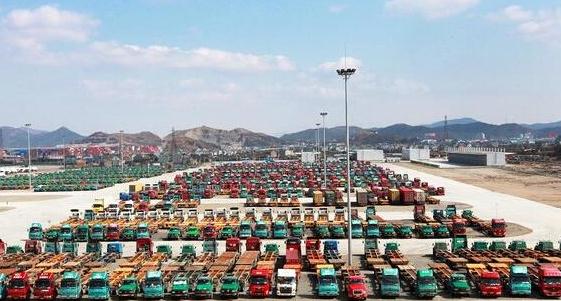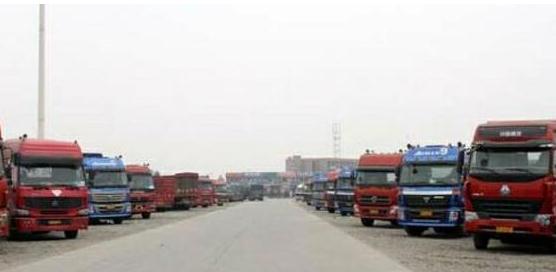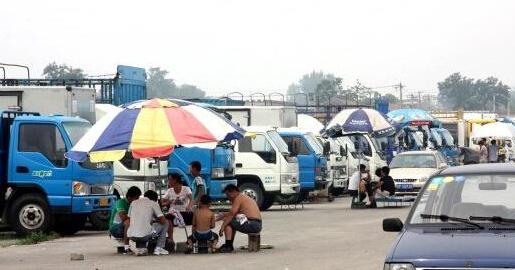At present, China's commercial vehicle industry has entered a new turning point in its development stage. It is also a turning point where puzzles, challenges and hopes are intertwined. Where is the way out? Where is the hope? In the "China International Commercial Vehicle Summit", Wang Xia, Chairman of the China Council for the Promotion of International Trade of the Automotive Industry Branch, put forward a problem that urgently needs to be solved in the commercial vehicle industry.

In the face of the overall decline in the commercial vehicle industry, and even the unfavorable trend of decline in the next year, will China's commercial vehicle companies be ready? Is there still a new opportunity for commercial vehicle companies under the general trend of bad market? On November 12th, at the “China International Commercial Vehicle Summit†held in Wuhan, heated discussions were held on the logistics industry, upstream and downstream manufacturers of commercial vehicles, and industry experts. As the official print media, we conducted a full follow-up report on the four-day 2015 China International Commercial Vehicles Exhibition and the forum during the exhibition.

How bleak is China's commercial vehicle industry? The most vivid description of the data. Since 2011, China's commercial vehicle market has been declining for five consecutive years. From January to September this year, the production and sales of commercial vehicles have dropped by about 12% year-on-year, and the declining trend for the whole year is a foregone conclusion.
"In recent years, especially this year, China's commercial vehicle industry is facing unprecedented difficulties. The market continues to decline, the task of structural adjustment is arduous, the export of unfavorable factors and other difficulties, so that the entire industry is facing a huge challenge." Wang Xia pointed out that China's commercial vehicles The industry is currently facing five major periods of structural adjustment, innovation, mergers and acquisitions in the industry, development of new energy commercial vehicles, and comprehensive “going out†of commercial vehicles in China. The key period can also be understood as a turning point, which is not only a turning point for the commercial vehicle industry to enter a new stage of development, but also a turning point where puzzles, challenges and hopes are intertwined.
The "new normal", as a term frequently used in 2015, is often used to describe the industry's environment. Wang Xia believes that the "new normal" has vividly revealed the laws of economic development, and it will be very difficult to maintain the rapid development of the economy as in the past. For the commercial vehicle industry, which is closely related to the macro economy, it is unlikely to return to the previous level of market demand.
He suggested that commercial vehicle companies should abandon the development model of relying on excessive consumption of resources and extensive and inefficient development, abandon the thinking of increasing dependence on investment and increasing production and sales volume to stimulate industry growth, and establish and adhere to the concept of innovation and development and green development in order to adapt to the “new†"Normal" can only be lost in the critical period, turning point, and even exit.
Despite the difficulties faced by the commercial vehicle industry, China is still the world's largest, most dynamic and most promising commercial vehicle market. There are still some new opportunities in the low-speed commercial vehicle industry.
Wang Xia believes that the concept of "innovation, coordination, green, openness and sharing" proposed by China's "Thirteenth Five-Year Plan" has very important guiding significance for the future development of China's commercial vehicle industry.
Zhang Bo, president of the China Industry News, said that the "One Belt and One Road" contains business opportunities. The market demand of the countries along the route is strong and the commercial vehicle market is still promising. He said that the auto industry should follow the trend and combine the "China Made 2025, One Belt and One Road" national strategy to "crisis" as "the opportunity." We must work hard in smart manufacturing, environmental protection, and going global. Strengthen brand promotion and allow Chinese products to be accepted by overseas consumers.

The manufacturing companies at the core of China's commercial vehicle industry are not pessimistic and waiting. They are actively surmounting difficulties, speeding up the pace of structural adjustment, constantly seeking new blue oceans in the new era, and actively satisfying new customer needs.
Industry sources stated that at present, the level of China's logistics industry is at the beginning of the second phase of global logistics development, and it shows that logistics costs have become an important part of the total operating costs of enterprises. Global supply of materials has been reduced from shortages to the saturation of production capacity and the transportation supply has been reduced. The stage characteristics of the transfer.
Liu Zhengtao, general manager of China National Heavy Duty Truck Marketing, believes that for the commercial vehicle manufacturers in this logistics period, the primary management goal is to reduce the operating costs of transport companies.
He said, "China's logistics industry puts forward the concept of large-scale logistics and modelling, but the implementation progress is not obvious. That means that China's logistics lags behind Western developed countries by about 20 years. For example, the proportion of China's logistics costs in GDP is 16.6%, 9% in the United States, 8% in Japan, 8% in Europe, and 13% in India, which means that according to the current total domestic GDP, if the cost of logistics in China can be reduced to the level of Western developed countries, it would be worth 5 trillion yuan. Therefore, the development plan of China's logistics industry has entered the national strategy."

Liu Zhengtao believes that in the future, logistics equipment will present development trends such as lightweighting, professional subdivision, suspension and suspension, train standardization, and generous amounts of express vehicles. He explained: “Because lighter weight can improve the economics of equipment in the environment of toll-by-weight charging; the subdivided market can promote the specialization and standardization of equipment; suspension and train standardization can be more suitable to include public railways and sea iron. Various modes of intermodal transport on the high seas; large quantities of express vehicles can reduce the cost of express logistics."
Zhang Wengen, deputy general manager of JAC's light commercial vehicle marketing company, admitted that many changes have taken place in today's light truck customers. “For example, customers are getting bigger and bigger. With the rapid development of the logistics industry and affiliation with the company’s operations, it is increasingly difficult for retail investors to find a source of goods. The survival conditions and space of retail investors are getting smaller and smaller, which prompts them to enter a powerful logistics industry. The light truck customers of the company have already formed a group, which makes the current light-card customers more and more huge.When they bought the light trucks, they did not present retail purchases, but negotiated with manufacturers or dealers in the form of enterprises. With the increasingly stringent national laws and regulations, customers in every industry, such as cold chain, beer, sanitation, dangerous goods, and aquatic products, have different requirements on the characteristics of products, and they also pose many challenges to the development of products. Must be more professional, more targeted, in order to meet diversified needs. Another example is that customers are more and more compliant. Compliance with laws and regulations is the bottom line of the company. The same is true of customers’ requirements for light trucks. Tonnage conforms to the conformity of the certificate and it is no longer necessary. It is more and more stringent for emission standards, environmental protection and energy conservation."
Zhang Wengen summarized the ten new demands of China's light-card customers in the new logistics development period: benefits, fuel economy, brand, value, power, safety, reliability, control, environmental protection, and bearing. And we think that these ten new requirements not only apply to light trucks but also to heavy trucks. When the market is not good, it is not only a good opportunity for the industry to reshuffle the card, but also the best time for the industry to maintain a rational and healthy development. It not only tests the strength of the company, but also verifies the market competitiveness of the product to meet customer demand.
An electric Spray Bottle is an advanced version of a traditional spray bottle, powered by electricity or batteries. It is designed to dispense liquids such as water, cleaning solutions, or pesticides in a fine mist. The main advantage of an electric spray bottle over a manual one is that it requires less effort to use. It can continuously spray with just a press of a button, making it easier for tasks like watering plants, cleaning, or disinfecting. Some electric spray bottles also allow you to adjust the intensity of the mist according to your needs.Plastic Spray Bottles
Mist Spray Bottle,Spray Mister,Mist Bottle,Plastic Spray Mist Bottles,diffusers for essential oils,aromatech diffuser,home fragrance diffuser
Kunshan Muchun Electric Co., LTD , https://www.nbmuchunelectric.com